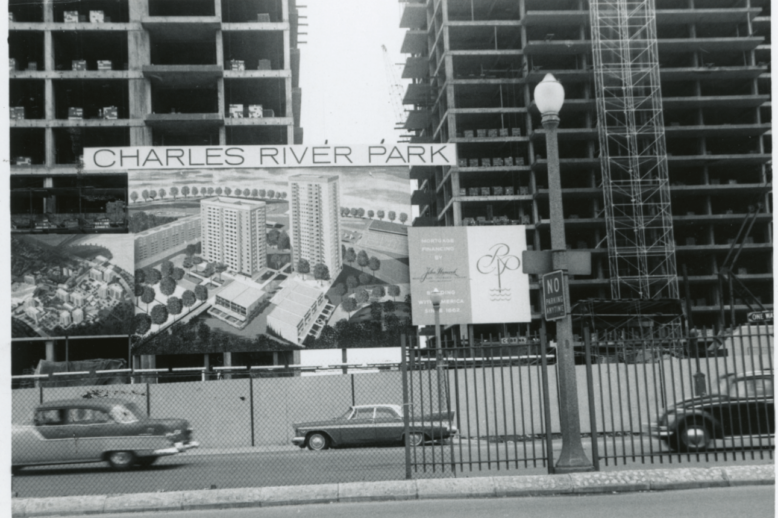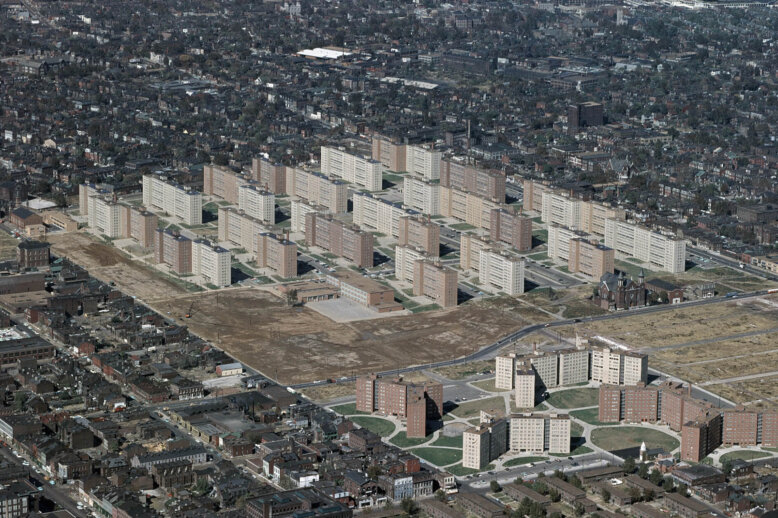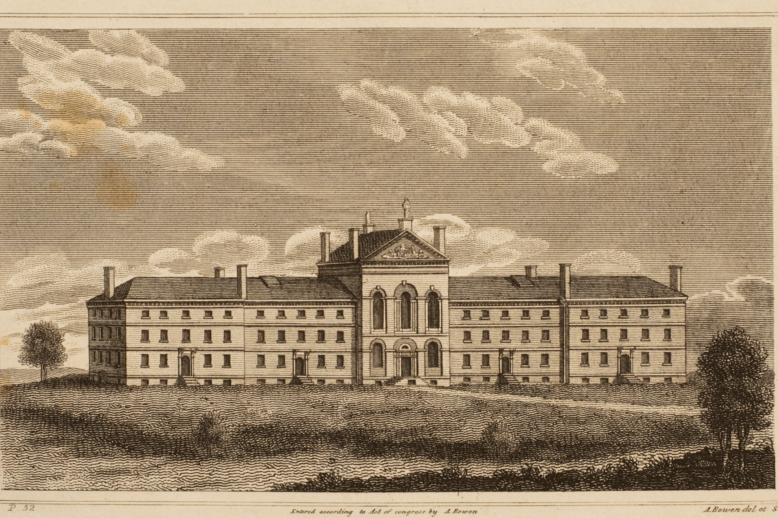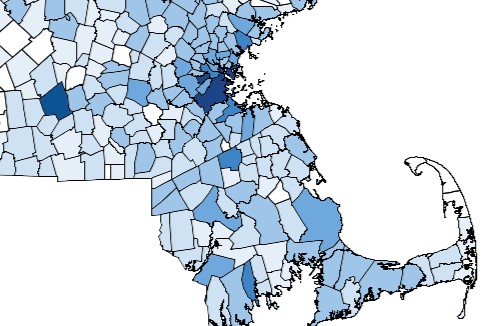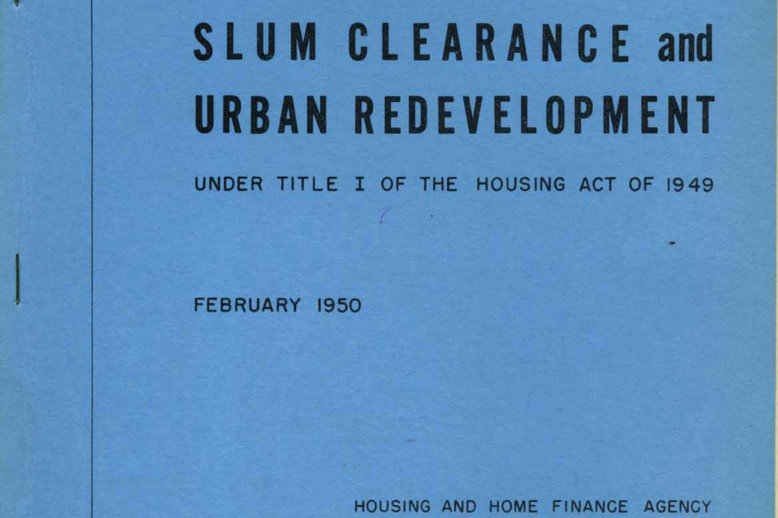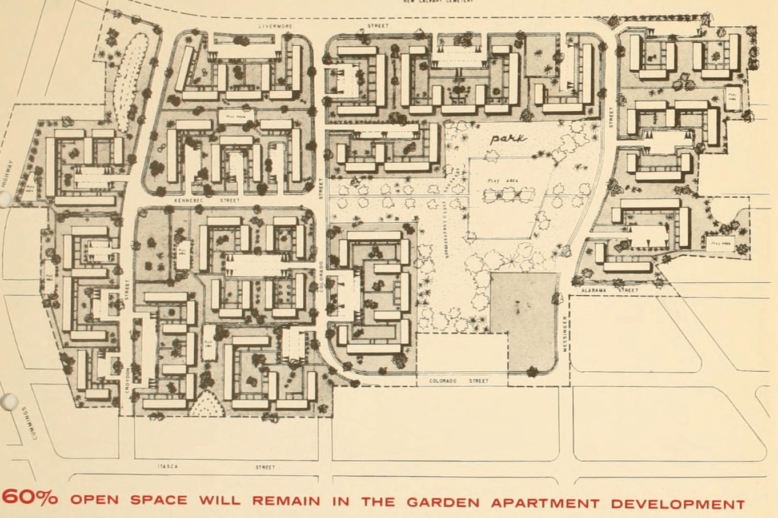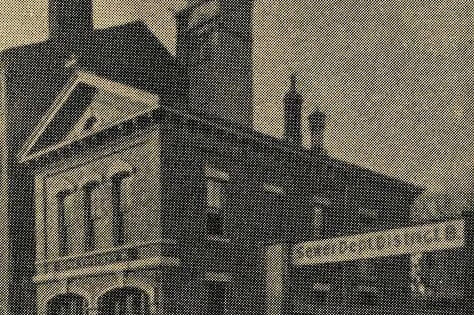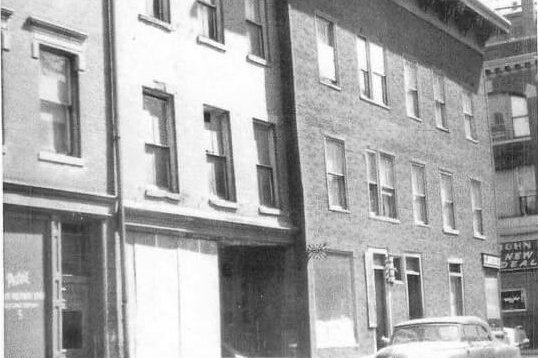Topic: City Planning
City planning and design, built environments, urban planners, parks, roads
The story of urban renewal in the West End is a complex one, marked by both ambitious plans and challenging realities when it comes to affordable housing. Over the past seventy years, the West End has served as a cautionary tale, full of broken promises and ongoing struggles for income-restricted housing. More recent efforts, such as the affordable housing initiative that is part of the redevelopment of the West End branch of the Boston Public Library, look to address this past.
In the 20th century, the superblock concept emerged from modernist planning principles as an alternative to the traditional grid. These superblocks, while theoretically promising a more ordered and healthy urban environment, proved destructive when implemented through America’s urban renewal programs, including in Boston’s West End.
For almost twenty-five years, the Leverett Street Almshouse dominated Barton’s Point, a blunt strip of land jutting out from the West End into the Charles River. In this building, designed by Charles Bulfinch, Boston continued to carry out its tradition of housing and caring for its most needy residents.
Boston, like its West End, is no stranger to marked population changes. Recent studies have predicted further transformations for Boston’s and Massachusetts’ populations that could have meaningful economic and political impacts. Such changes, current and future, are influenced by various interrelated factors: immigration patterns, cost of living, major disruptors, anchor institutions, and global population growth rate.
While the demolition of the West End began in 1958, the momentum for its destruction and for the federal urban renewal program itself began 20 years earlier, in the aftermath of the Great Depression. The Housing Act of 1949 would later mark the official birth of the federal Urban Renewal Program. Although it aimed to revitalize struggling inner cities, it often did so at the expense of established communities and displaced residents.
The Mattapan Project was first mentioned by the Boston Housing Authority in 1952 and later by the Boston Redevelopment Authority in 1962 as a possible urban renewal project. Despite the preliminary planning funding being granted in 1963 and the urban renewal application prepared in 1964, the project was dropped by the City of Boston. The delays in the Mattapan Project’s site development and the eventual abandonment of the plan helps to demonstrate the changes in public opinion on urban renewal projects of the time.
In 1931, Mayor James Michael Curley planned to sell 50,000 square feet of city land, on North Grove Street in the West End, to Massachusetts General Hospital. Because this land was used by the Public Works Department for sanitation in the West End, residents – and city councilor John I. Fitzgerald – strongly opposed the sale. Fitzgerald, associated with West End boss Martin Lomasney, successfully advocated for the proceeds of the sale to be allocated for continued sanitation services in the West End.
The Lost Streets of the West End: Minot Street was one of the dozens of narrow, residential, West End streets razed by redevelopment in the 1950s. While the two street blocks on the northern side of the redevelopment zone were changed profoundly by urban renewal, the site’s rich history represents the constantly shifting geography of the Boston cityscape over the past two centuries.


